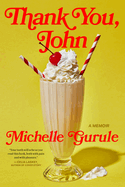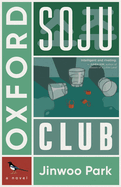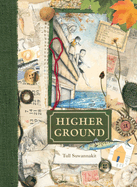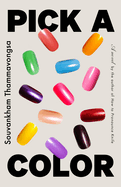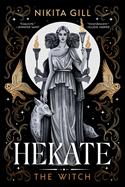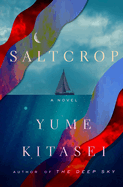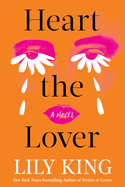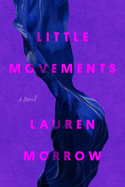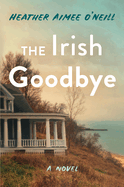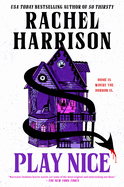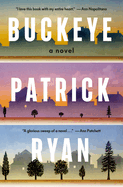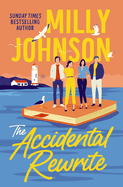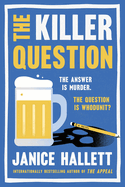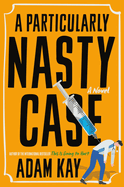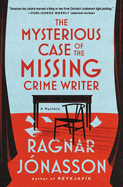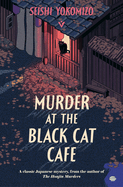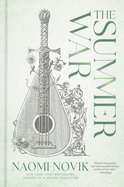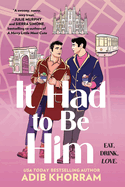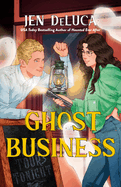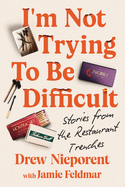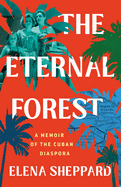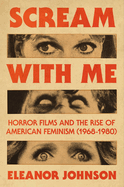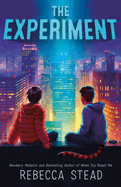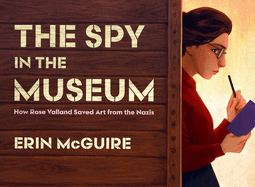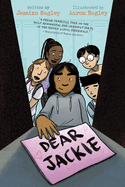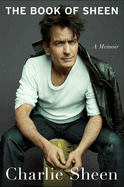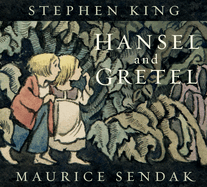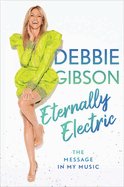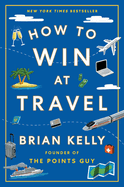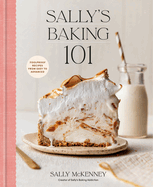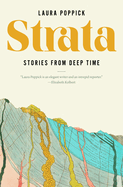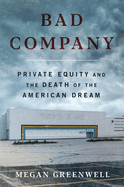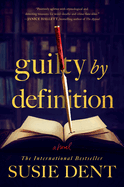Friday, October 3, 2025
This week's newsletter is positively bursting with fantastic reading recommendations! In Thank You, John, writing instructor Michelle Gurule delivers a "wry and insightful" memoir with a nuanced critique of the class and power structures related to sex work. Meanwhile, Jinwoo Park's Oxford Soju Club is as much a "lightning-paced spy thriller" as it is a "extraordinarily multilayered examination of identity and loyalty." And Yume Kitasei's propulsive postapocalyptic adventure, Saltcrop, sends sisters sailing across the ocean to find a missing family member. Plus, Higher Ground, the "captivating, innovative" children's graphic novel by Tull Suwannakit, features a resilient family adapting to a landscape drastically altered by a natural disaster.
Pick a Color
by Souvankham Thammavongsa
A soulful first novel by the award-winning poet and short story writer Souvankham Thammavongsa, Pick a Color follows the enigmatic proprietor of a nail salon over the course of an eventful summer day. It is a skillful, witty portrait of a woman composed of intriguing contradictions, the cracks in her hard outer shell exposing depths her clients will never know.
Ning is the astute, dry-humored narrator and the owner of "Susan's." A former boxer in her early 40s, she projects a wary detachment and sizes people up as if they are potential competitors in the ring. In fact, she is soft-hearted and sensitive, eager to be included but unwilling to expose her vulnerabilities. Thammavongsa (How to Pronounce Knife) is marvelously adept at showcasing her protagonist's almost pathological need for control and the dark, swirling mysteries of her troubled past.
A Laotian Canadian writer, Thammavongsa takes an experience readers may be familiar with as customers and invites them to view it from an entirely different perspective. It is a delight to immerse oneself in the everyday drama of the salon's "brightly lit box" with the rhythmic cadence of Thammavongsa's storytelling and the narrative spaces she creates for readers' imaginations to ignite.
There is no dramatic ending here but Ning's day, as it comes to a close, is full of quiet victories. People who get their nails done are "hopeful," she observes, because they think they can change their lives for the better. One can say the same for Ning--the salon is her proof of a solid future, a buffer against the terrifying impermanence of life. --Shahina Piyarali
Discover: A nail salon owner navigates an eventful summer day in this witty debut novel by a Laotian Canadian writer.
Heart the Lover
by Lily King
A young woman's intellectual blossoming sets the tone for Lily King's Heart the Lover, an enchanting story about the pursuit of love and the exquisite, bittersweet regret of paths not taken. Taking stock of the relationships that shaped her life, a famous writer returns to her senior year of college and to the one great love that got away.
The first part of Heart the Lover is an entertaining romp of a college drama. Uninspired by her classes, the narrator is practically sleep-walking toward graduation, until she meets two exceptional scholars, Sam and Yash, who ignite her creative ambitions and sharpen her understanding of her potential. What was only "paltry dabbling" before she met them transforms into a mission to complete an honors thesis in creative writing. They take to calling her "Jordan," and it isn't until the end of the novel we learn the narrator's true name, one fans of King's Writers & Lovers will happily recognize.
Jordan's awareness that she is "unbearably naïve" is offset by her nonchalant sense of humor and sharp eye for irony. Although Jordan starts dating Sam, it's charismatic Yash with whom she develops an undeniable connection and whose magnetic pull she can't resist. It makes for a crowded threesome, with one person at the loneliest corner of their triangle at any given time.
King (Euphoria) is not one for dramatic plot flourishes; instead she calibrates Jordan's story with superbly timed, understated revelations and dazzling dialogue that will keep readers riveted. There may not be second chances exactly, but King allows for Sam, Yash, and Jordan's destinies to collide spectacularly far into the future. --Shahina Piyarali
Discover: In this enchanting story about a student's intellectual awakening and the bittersweet regret of paths not taken, a famous writer reflects on her college years and the one great love that got away.
Little Movements
by Lauren Morrow
Tokenism is a hurtful practice, as Black artists already know or soon discover in Little Movements, Lauren Morrow's agreeably of-the-moment debut novel. Layla Smart grew up in St. Louis, Mo., where, thanks to her pragmatic single mother, "fear remained a cornerstone of my life." She developed an early passion for dance, a passion her mother took pains to temper. When readers meet her, Layla is 33, living in Brooklyn, and two years into her marriage to Eli, a would-be screenwriter who has surrendered his dream to become an IT specialist. Layla, who worked as an intern at the Brooklyn Academy of Music, has just received a plum invitation: nine months as choreographer-in-residence at Briar House, a dance company in a majority-white Vermont town where Pride and Black Lives Matter flags decorate the landscape.
Would it be a shock to learn that all is not as it first appears? The studio has an all-white board. The company has received criticism for a lack of diversity. And suffice it to say that a right-wing militia called the Green Mountain Men wasn't responsible for those BLM flags. Morrow skillfully blends these elements and more, including Layla's corps of dancers, all of them Black; a white company director with a "slim body swimming in Eileen Fisher" who may not be the ally she projects; and the strain a nine-month separation wreaks upon Layla's marriage. The result is an accomplished work that, at its best, is as elegant as a dance piece, gliding effortlessly from one variation to the next. --Michael Magras, freelance book reviewer
Discover: Lauren Morrow's accomplished debut novel tells the story of a young Black woman in Brooklyn who becomes choreographer-in-residence at a Vermont dance studio with a poor record on diversity.
The Irish Goodbye
by Heather Aimee O'Neill
In her debut novel, The Irish Goodbye, poet and editor Heather Aimee O'Neill (Memory Future, Obliterations) gives readers a moving story of heartache and healing. The Ryan children once numbered four, until a boating accident and its fallout forever changed their family's trajectory.
Twenty-five years after the accident, the remaining siblings gather at their Long Island home for the first time in many years, bringing both their current woes and decades of resentment along with them. Maggie teaches high school English and is internally spiraling after ending an affair with the wife of one of her school's trustees. Cait lives in London with her twin children, Poppy and Augustus. She is a year past her divorce, recently unemployed, and unexpectedly back in touch with her high school boyfriend-of-sorts. Alice still lives in their hometown, where she tends to her parents and her family, while attempting to restart her career as an interior designer and reclaim an identity outside of caretaker.
O'Neill alternates between the sisters' points of view as they arrive for the Thanksgiving holiday, spinning a tangled web of the complexities that are so common among families. Although simply surviving life's difficulties--what the Ryans have been doing up till now--is a valid approach, The Irish Goodbye asks what a family could look like if its members banded together, making space for the best and worst of each other as they reforge a closer bond. How those closest to a person often cause the most pain is the heart of O'Neill's affecting novel, and it's a truism that feels universal, whether with blood relatives or chosen family. --Kristen Coates
Discover: The Irish Goodbye is a moving story of heartache and healing following a tragic boating accident with far-reaching consequences.
Play Nice
by Rachel Harrison
A party girl with a dark past faces her family's literal and figurative demons in the creepy and insightful supernatural horror novel Play Nice by Rachel Harrison (Black Sheep; The Return).
Stylist and social media influencer Clio did not have a glamorous childhood. Her estranged mother, Alexandra, lost custody of Clio and her two sisters to their father in a flurry of abuse, alcoholism, and delusions. Now Alexandra has died suddenly in the vacant house where she and the girls lived, the one she insisted was possessed. Clio decides to fix up the house and sell it, "the next best thing to burning it to the ground." She finds her childhood bedroom unchanged, aside from the presence of a torn, pen-annotated copy of Alexandra's Amityville Horror-esque tell-all book. Alexandra's notes admit to creative license but insist the demon is real and that Clio's father isn't the hero he pretends to be. Then strange occurrences at the house begin to add up, and Clio wonders if her mother wasn't the most monstrous entity living on Edgewood Drive after all.
Harrison's haunted house plot combines a nostalgia for 1970s domestic horror with a dissection of a struggling woman's demonization. "The world will drive a woman insane, then point at them and laugh," Alexandra writes to Clio, underscoring a dual narrative packed with raw wounds and feminine rage that ripple through Clio's life and her relationship with her older sisters. This exploration of how stories shape trauma and the healing process is sharp, introspective, and deeply unsettling. --Jaclyn Fulwood, blogger at Infinite Reads
Discover: A young woman confronts her family's literal and figurative demons in this sharp, unsettling haunted house novel.
Buckeye
by Patrick Ryan
The impact of war on a small town in the U.S. is at the heart of Buckeye, Patrick Ryan's epic first novel for adults, but it's the struggles, forgiveness, and hopefulness that resonate as the Jenkins and Salt families confront global and personal challenges.
It's June 1945, and Bonhomie, Ohio, is celebrating President Truman's radio broadcast announcing Germany's surrender when Cal Jenkins and Margaret Salt meet. As they share this moment in Bonhomie, where "most everyone felt as if they'd laid eyes on most everyone else," they never imagine that their futures will eventually intertwine.
Buckeye then turns to the other conflicts weighing on its protagonists: Cal and his wife, Becky; Margaret and her husband, Felix. Son of an eccentric World War I veteran, Cal is embarrassed by his ineligibility to serve. Meanwhile, Felix volunteers for the navy, hoping the military might "reset" his closeted "proclivity," but returns as one of the "guys who won't talk about" his experience. Kindhearted Becky is a spiritualist, connecting her clients with loved ones but creating a schism with skeptic Cal. Both couples raise sons in peaceful 1950s Bonhomie, where only Margaret knows the truth of her son Tom's paternity; the revelation, a decade after his birth, upends the families. As the boys become teenagers, more combat rages, and the Vietnam War draft comes for them.
Heartache abounds for the flawed but sympathetic characters in this sensitively detailed novel, but love heals. As Buckeye concludes in 1981, Becky reflects on years of communicating with spirits, noting what they "most often conveyed was love and forgiveness," and concluding that these must be "the two most important things in the world." --Cheryl McKeon, Book House of Stuyvesant Plaza, Albany, N.Y.
Discover: Patrick Ryan's Buckeye is a heartrending, multigenerational novel about small-town Ohio families, the effects of war and secrets, and the healing power of forgiveness.
The Accidental Rewrite
by Milly Johnson
The Accidental Rewrite, British novelist Milly Johnson's quirky, warmhearted novel (her first published in the U.S.), follows a woman who's fed up with the story she's living and gets an unexpected chance to overhaul her narrative.
Business analyst Polly Potter is miserable: her arrogant boss and her thoughtless partner are both dragging her down. When she quits her job and flees her life, Polly ends up in a seaside Yorkshire town with a concussion, convinced her name is Sabrina Anderson--the name of the protagonist in the novel she was writing. As she recovers, helped along by retired nurse Marielle and her restaurateur son, Teddy, Polly/Sabrina tries to fill in the holes in her memory. Readers also get glimpses into Polly's early life, her hopes for motherhood, and the highly amusing errata in the beleaguered local newspaper, the Daily Trumpet.
Johnson creates a likable protagonist in Polly, who is kind, hardworking, and stubbornly optimistic despite her circumstances. She also surrounds Polly with a welcoming new community through Teddy's restaurant and Marielle, whose group of female friends (the "Mad Cows") worry that Polly is a con artist and will do anything to protect their friend. Polly is proud to use her business skills working at Teddy's restaurant, but as her personal memories resurface, she must decide if she is brave enough to step into a new story. With humor, hope, and a bit of magical thinking, Johnson takes her protagonist far beyond the Yorkshire coast and invites readers to imagine a rewrite of their own lives. --Katie Noah Gibson, blogger at Cakes, Tea and Dreams
Discover: The Accidental Rewrite, Milly Johnson's quirky, warmhearted novel, follows a woman who flees her life and wakes up with a concussion--and an unexpected chance to rewrite her own story.
Mystery & Thriller
Oxford Soju Club
by Jinwoo Park
Readers who have ever straddled multiple countries and/or cultures, readers who have endured and adjusted to peripatetic relocations, will find deep, aching resonance with Jinwoo Park's enthralling debut, Oxford Soju Club. Park spotlights diaspora, heritage, family, self-knowledge--all commingled into a lightning-paced spy thriller with substantial body count.
Park's cast converges in Oxford, England. That the main players are all initially introduced with descriptions rather than names suggests identities are mutable, especially amid political and historical (dis)loyalties. The Northerners are two: legendary North Korean spymaster Doha Kim and his protégé Yohan Kim--the former is also an Oxford professor while the latter is locally known as Junichi Nakamura, a French-born Oxford student from Nantes. The Southerner is Jihoon Lim, an immigrant from Seoul, now the proprietor of Soju Club, Oxford's only Korean restaurant. The American is Yunah Choi, born on Long Island, N.Y., to Korean immigrant, bagel store-owning parents; she's a CIA agent assigned to break up a North Korean cell, but in Oxford, she's South Korean med school dropout Seonhye Park, now bartending at a local pub.
Park immediately commands attention with a bloody opening: Doha's white shirt is soaked crimson with a fatal knife wound. Yohan can't go on without uncovering what happened, and why--his need to know provokes fatal crossed paths with shocking, wrenching consequences.
Park moves fluidly, effortlessly between Oxford in the present and all the various pasts that had to happen to produce this intricate, lethal convergence. He expertly connects and comforts, severs and shocks, all the while navigating revelatory twists and turns. Pair with Alice Stephens's Famous Adopted People for an immersive diversion. --Terry Hong
Discover: Canadian Korean Jinwoo Park's debut novel, Oxford Soju Club, is an extraordinarily multilayered examination of identity and loyalty, deftly presented as an addicting spy thriller.
The Killer Question
by Janice Hallett
Pursuit isn't trivial but deadly serious in Janice Hallett's dazzling procedural, The Killer Question. The intricately woven plot is cleverly dispensed with a jaw-dropping amount of text messages, e-mails, and investigatory depositions.
Dominic Eastwood pitches an "explosive" true-crime documentary to Netflix producer Polly Baker about events that happened to his aunt and uncle, Sue and Mal Eastwood. The case has it all: "love, passion, intrigue, tension, betrayal, deception and... murder." It also has more twists than a spiral staircase.
From December 2017 to October 2019, the Eastwoods owned a "picture-perfect, chocolate-box" pub called The Case is Altered in the backroads of Hertfordshire, northwest of London. There, they ran a highly competitive Monday night quiz game. The pub ran smoothly until the proverbial fly appeared in the amber pints. Mal brawled with a nefarious newcomer; a trivia team may have been cheating; a body was found in the nearby river.
Sorting out who's who, what's what, and why's why makes for an entertaining and engaging reading experience. A large part of that is figuring out Dominic's part in it--how much he knows, and why he proposes the story at all for the documentary project.
A cheeky police subplot, Operation Honeyguide, adds kidnapping, drug running, and more corpses before Hallett (The Examiner) pulls out all the startling stops for a mind-boggling and wholly unexpected conclusion. The Killer Question gets a perfect score. --Robert Allen Papinchak, freelance book critic
Discover: Sorting out who's who, what's what, and why's why makes The Killer Question an entertaining read and a perfect score for author Janice Hallett.
A Particularly Nasty Case
by Adam Kay
If a Marx Brother had played a gay rheumatologist at a London hospital, the characterization might have conjured Eitan Rose, the central figure in A Particularly Nasty Case, an obscenely hilarious mystery and the first novel from Adam Kay (This Is Going to Hurt).
Eitan is back at work after a four-month suspension resulting from a manic episode (he has bipolar disorder) that corresponded with a romantic bust-up. Supervising Eitan's return is his nemesis, Douglas Moran, the hospital's medical director. When an adorable hospital porter with new-boyfriend potential suggests that they ransack Moran's office, Eitan agrees, and then agrees, mid-ransack, to the sexual position in which Moran catches them. Eitan reports to work the following day to face the music and learns that Moran suffered a fatal heart attack--strange, as the man recently told Eitan that his stress echocardiogram was normal. What's more, Eitan knows that Moran's wife was furious at her husband. Eitan decides to sniff around--"After all, medicine was nothing if not detective work."
Kay's unremitting humor ranges from clean to unrepeatable here. (Okay, fine, here's one that's pushing it: Eitan's hesitant friend speaks "with the enthusiasm of somebody who's just agreed to shower with Prince Andrew.") As A Particularly Nasty Case works its way to its big reveal, which will have its detractors, the novel promotes compassion for those suffering from mental illness, which may or may not have informed some of Eitan's more questionable investigative strategies (the number of manhandled corpses is greater than one). --Nell Beram, author and freelance writer
Discover: A gay rheumatologist who has bipolar disorder and works at a London hospital decides to look into his supervisor's unexpected death in Adam Kay's unremittingly funny and quite filthy first mystery.
The Mysterious Case of the Missing Crime Writer
by Ragnar Jónasson, transl. by Victoria Cribb
Ragnar Jónasson's outstanding The Mysterious Case of the Missing Crime Writer opens with Icelandic police detective Helgi Reykdal in his "happy place": reading a beloved mystery novel in the quiet comfort of his family's bookstore, far from his job in Reykjavík.
Helgi's vacation is cut short when Elín Jónsdóttir, an author "hailed as a pioneer of Icelandic crime writing," goes missing. Her publisher is worried, and Helgi's boss wants him on the investigation before it becomes public, believing the detective's fondness for mysteries gives him an advantage. Helgi rereads Elín's novels in search of clues, and he interviews Elín's friends and associates, yielding a complicated decades-old history. Helgi can't help comparing Elín's vanishing with Agatha Christie's still-unexplained 11-day disappearance in 1926. Furthermore, Helgi's personal life threatens to intrude on his case. He is considering a future with his new girlfriend, the intelligent Aníta, but his violent, abusive, alcoholic former girlfriend, Bergthóra, refuses to believe their relationship is over and she begins stalking Aníta.
Jónasson expertly sprinkles The Mysterious Case of the Missing Crime Writer with scenes from other time frames, including a 1965 conversation about robbing a bank, a 2002 flashback about Elín's last novel, and a 2005 interview with the author. They provide a savvy homage to detective fiction and cleverly drop clues worthy of the best of that fiction. Helgi's own love of the genre, long a source of amusement among his colleagues, provides amusing nods to the reader as well.
Jónasson's adroit follow-up to Death at the Sanatorium cleverly mixes a solid police procedural with a valentine to 1930s and '40s mysteries. --Oline H. Cogdill, freelance reviewer
Discover: An Icelandic police detective uses his love of mystery fiction to track down a mystery author who has disappeared in this outstanding thriller.
Murder at the Black Cat Cafe
by Seishi Yokomizo, transl. by Bryan Karetnyk
Revered Japanese mystery novelist Seishi Yokomizo (1902-1981) wrote 77 titles starring beloved detective Kosuke Kindaichi. Two early Kindaichi cases are bundled here, both originally published in the late 1940s. The intriguingly knotty pair easily stand alone and can serve as a superb Kindaichi introduction.
Rather than Yokomizo's usual "locked room" mysteries, Murder at the Black Cat Cafe is " 'a faceless corpse' one." On the outskirts of post-World War II Tokyo is the Black Cat Cafe, formerly run by a couple repatriated from China to Tokyo after Japan's defeat. They've since disappeared after selling the property, leaving behind a decomposing nude victim in a shallow garden grave. Kindaichi, sent by the Tokyo Metropolitan Police, arrives to assist the convoluted case. In the shorter Why Did the Well Wheel Creak?, Kindaichi is more messenger than solver, reinvestigating a prominent family's destruction that unfolds via collected letters and newspaper clippings. The corpses aren't faceless here, but faces are conspicuously featured, especially those of two half brothers--one the wealthy legitimate heir; the other an unacknowledged discard--whose visages become more similar with age.
Almost a half century after his death, Yokomizo remains an evergreen favorite for his skillfully constructed multilayered puzzles, expertly keeping readers' suspicions twisting and turning. Committed boutique press Pushkin introduced Yokomizo to Anglophone readers with six full Yokomizo mysteries thus far, two of which were translated by Japanese and Russian academic Bryan Karetnyk, who returns for these two novellas. With at least 70 more titles left, new generations of lucky Kindaichi enthusiasts certainly have decades of discoveries ahead. --Terry Hong
Discover: Faces (missing and matching) hold all the answers in this bundle of two adroitly multilayered murder mysteries.
Science Fiction & Fantasy
Saltcrop
by Yume Kitasei
In the postapocalyptic adventure Saltcrop, Carmen and Skipper set sail across the ocean to find their missing sister, Nora, who was last seen in the employ of a suspicious agricultural megacompany. The company, Renewal, makes massive profits selling blight-resistant seeds and other solutions to widespread crop failures in a climate change-ravaged world. Hints suggest Renewal has skeletons in the closet. Saltcrop's action and mystery are both thrilling, but it's the complicated sisterly dynamics that propels Yume Kitasei's novel into a single-night read.
The wild escapade takes place in a seamlessly imagined world, traversing drowned towns, decaying cities, and the open ocean. The beautifully rendered setting is equal parts eerie and gorgeous, like the unnaturally phosphorescent whales the sisters encounter. "After, they mourn the departure of the whales and the lights, and all the moments of pure wonder like this that only come once in a life and can never be fully remembered."
The characters' personalities clash spectacularly, their disputes arising with family as well as the strangers they meet along the way. When they pick up a sailing companion, Jackson, his volatility makes for a truly nail-biting read. Kitasei's writing shows profound relational insight, depicting, for instance, the grandmother who raised the three sisters "trying to pinch and prod" Skipper into her own likeness, "not the person Grandma was, but the person Grandma imagined herself to be. But Skipper was a rock, not clay."
Saltcrop is a poignant read that opens up an ambitious array of mysteries, character conflicts, and moral questions--and delivers spectacularly on them all. --Carol Caley, writer
Discover: In the thrilling postapocalyptic adventure Saltcrop, Carmen and Skipper set sail across the ocean to find their missing sister, and their journey is worthy of a single-night read.
The Summer War
by Naomi Novik
An adolescent sorceress must find a way to lift the curse she accidentally cast on her heroic brother in The Summer War, a touching fantasy novella by Naomi Novik (The Last Graduate; Spinning Silver).
Celia's father was made a grand duke after winning the century-long Summer War for the kingdom of Prosper. He chose two of his wives strategically and raised his older son, Argent, with the plan to marry him to a royal princess and make himself the power behind the throne. But that plan comes apart the day that Argent returns from his first summer games as a knight just long enough to declare he is leaving the kingdom. In her outrage at being abandoned, Celia shouts at her brother that she hopes no one else ever loves him again, only to realize too late that her ancestral sorceress powers have awakened, dooming him to her unintended prophecy. When Celia's marriage opens a new conflict with the faerie-like summerlings, she, Argent, and their neglected middle brother, Roric, will need to find a way to save one another.
In only a brief novella, Novik skillfully presents a fully imagined world, shaped by discord and the heart-wrenchingly rendered grief of nearly immortal beings. As is appropriate for a faerie story, curses and oaths in this world are binding; even the siblings' enemies are caught in a trap they don't entirely deserve. The light, fairy tale-like language enchants from the first page, and will be sure to delight fans of Alix E. Harrow. --Kristen Allen-Vogel, information services librarian at Dayton Metro Library
Discover: A young sorceress's curse on her brother sets off a touching tale of intrigue and family bonds that can't be broken in Naomi Novik's novella, The Summer War.
Romance
It Had to Be Him
by Adib Khorram
William C. Morris Award-winning queer Iranian author Adib Khorram (I'll Have What He's Having; Seven Special Somethings) returns to the adult romance genre with a sincere, soft novel about two men at the crossroads of change who experience the surprising delight of a second chance at love.
Reeling from a disastrous marriage proposal that ultimately ended his relationship, Ramin drunkenly books a spontaneous trip to Milan to mend his broken heart--and maybe also ferment it in some delectable Italian wine. Meanwhile, Noah is on a trip with his ex-wife and their son, but it's more of a reconnaissance mission than a vacation, since Noah's ex-wife is set to inherit her family's wine store and she's considering moving to Italy with the boy. A chance encounter at a gelateria brings Ramin and Noah together for the first time since high school, when Ramin was a less popular student during Noah's shining days as an athlete.
Their unexpected reunion sets off a series of more coincidences that ultimately spur the pair to start spending time together. Their shared joy at resuming a friendship with an undercurrent of attraction easily transitions into something more. As Ramin works through damaging beliefs about himself and Noah figures out how to balance being a good father with his own needs, Khorram gives readers a tender novel about what to keep and what to discard as one ages. This emotional depth is wrapped up in a sweet and steamy love story about how fitting two lives together takes effort, but being seen and loved for who we are is always worthwhile. --Kristen Coates, editor and freelance reviewer
Discover: Adib Khorram's It Had to Be Him is a sweet and steamy novel about two high school classmates given a second chance at love when they unexpectedly reunite as adults in Italy.
Ghost Business
by Jen DeLuca
Jen DeLuca (Well Met; Haunted Ever After) brings the Florida Gulf Coast to charming (if sweaty) life in Ghost Business. Raised in Boneyard Key, Fla., by her great-aunt Alice, Sophie has been quietly running a ghost tour for years. But she doesn't have an online presence and advertises only by word of mouth, so entrepreneur Tristan Martin has no idea she exists. Tristan arrives in Boneyard Key, the "most haunted town in Florida," excited to set up a new franchise of his successful company, Ghouls Night Out. He is shocked to discover that he might be about to ruin things for the pretty girl he just met in a bar.
Sophie realizes that Tristan is trying to horn in on her beloved business, and she publicly explodes when their opposing tours collide, a moment that is unfortunately caught on camera by tourists and goes viral. Both Sophie's and Tristan's businesses see an increase in sales, but Boneyard Key is still too small for two ghost-tour companies, so the pair strike a bargain: whoever has earned more by the end of September stays open, while the loser agrees to fold. The problem with having made a deal with the devil, Sophie soon discovers, is that this devil is undeniably cute. She needs to resist Tristan's charms to protect her business, but the question is, can she?
Sweet, sexy, and full of lighthearted paranormal antics, Ghost Business is an excellent read for fans of the enemies-to-lovers trope, small-town settings, and a little supernatural mischief that perfectly straddles the line between summery beach read and spooky season romance. --Jessica Howard, former bookseller, freelance book reviewer
Discover: In this sweetly haunted romance, the operators of two rival ghost-tour companies fall for each other.
Biography & Memoir
Thank You, John
by Michelle Gurule
Michelle Gurule combines a frank and provocative personal account of her experience as a sex worker with pointed commentary on class and power structures in Thank You, John, her wry and insightful debut memoir.
In 2015, at the age of 24, Gurule started stripping to offset her tuition bills and help her quirky, financially strapped family. While doing so, she met her "John," a much older businessman who offered her thousands of dollars a month (plus bonuses for expenses such as dental work) for sex. Gurule struggled with feelings of shame and revulsion but accepted the arrangement and her role as John's "sugar baby," sharing her secret with only her family, about whom she writes with tremendous warmth. Despite her discomfort, the money proved irresistible and, within two years, Gurule had paid down her student loans and medical bills, was accepted into an MFA program, and had stashed away a decent nest egg. It was only after a manipulative writing professor, with whom Gurule had become involved, suggested blackmailing John for larger sums of cash that Gurule realized it was time to leave sex work behind.
With nuance and sensitivity, Gurule examines the power imbalance between the moneyed class and the people they can afford to buy. Moreover, she is unsparing in her appraisal of her own behavior and motivations. At every stage in her two-year arrangement with John, Gurule was able to make her own choices. Ultimately, though many of those choices led to painful situations, she is happy with her decisions. Unflinching and wise, Thank You, John is a compelling debut and Michelle Gurule is a writer to watch.--Debra Ginsberg, author and freelance editor
Discover: Michelle Gurule's provocative memoir of her experience as a sex worker is both an engaging personal story and a critique of class and power structures.
I'm Not Trying to Be Difficult: Stories from the Restaurant Trenches
by Drew Nieporent
Full of insider gossip and celebrity appearances, I'm Not Trying to Be Difficult is an energetic memoir from renowned restaurateur Drew Nieporent. It's a fast-moving and enjoyable account of his love for and life in the restaurant business.
Nieporent grew up in a middle-class Manhattan neighborhood in the 1960s with a civil servant father who took him to countless meals in the restaurants he'd helped to obtain liquor licenses. It was during those meals that Nieporent vowed to open his own restaurant. His first high school gig, of which he still speaks fondly, was at a McDonald's. From there, he waited tables on a Scandinavian cruise ship while enrolled at Cornell. After graduation, he took a job as assistant restaurant director at Maxwell's Plum in New York City. Intensely driven and willing to sacrifice his time for the work, Nieporent managed to open his own restaurant, Montrachet, just before he turned 30. Montrachet, however, was only the beginning. Nieporent partnered with Robert DeNiro to open the wildly successful Tribeca Grill and then, in 1994, he cofounded Nobu along with DeNiro and chef Nobuyuki Matsuhisa.
Along with plenty of advice, such as "the space dictates the idea of the restaurant, not the other way around," Nieporent relates his encounters with numerous celebrities including Bruce Springsteen, Robin Williams, and even Donald Trump, about whom Nieporent writes, "The leopard does not change its spots." There have been bumps in the road--high-profile splits with partners, a lack of personal life, and health problems--but ultimately, Nieporent declares he is choosing "to go out on top." This lively chronicle of his powerhouse career is proof that he has. --Debra Ginsberg, author and freelance editor
Discover: Drew Nieporent's enjoyable memoir of his life as a renowned restaurateur dishes up insider gossip and plenty of celebrity appearances.
History
The Eternal Forest: A Memoir of the Cuban Diaspora
by Elena Sheppard
Elena Sheppard's poignant memoir, The Eternal Forest, explores her Cuban family's complicated history with the island they loved and (in some cases) left behind. Sheppard, the only daughter of a Cuban mother and a white American father, also examines her fascination with her family's past, even as she tries to piece together the fragmented narrative from her grandmother's stories, her own visits to Cuba, and other family artifacts and stories.
Sheppard's narrative focuses often on her grandmother Rosita, the largest "nesting doll" in their female-dominated family. Born in Cuba in 1921, Rosita is the matriarch, and her stories of politics, immigration, and womanhood shape the family narratives. Sheppard recounts the details of Rosita's childhood and young womanhood, painting a picture of pre-Castro Cuba. She traces the effects and aftermath of Castro's rise to power, the complicated feelings of Cuban immigrants toward the U.S., and her family's constant yearning for Cuba, even after decades away. "Cuba and the scar of exile are in all of our details," she writes. This longing, shot through with relief at having escaped, permeates the book.
The Eternal Forest also engages with mental illness: Sheppard's aunt, Mariana, died by suicide, and her presence haunts the family still. However, Sheppard's narrative also contains stubborn joy: reuniting with family members who never left the island; enjoying Cuban food and traditions in Miami and elsewhere; and the enduring belief in the possibility of return and redemption.
Sheppard's well-researched and haunting memoir is a tribute to a lost homeland and a moving reflection on what it means to live in one country and long for another. --Katie Noah Gibson, blogger at Cakes, Tea and Dreams
Discover: Elena Sheppard's haunting memoir recounts her Cuban family's history of immigration, love, and loss.
Performing Arts
Scream with Me: Horror Films and the Rise of American Feminism (1968-1980)
by Eleanor Johnson
Listen in on the conversation between women's rights in the U.S. and the cinematic world through six classics of the horror film genre in the adept, intelligent pop-culture history Scream with Me: Horror Films and the Rise of American Feminism (1968-1980) by Eleanor Johnson. Horror is often cited as a misogynistic genre, but here Johnson, professor of English and Comparative Literature at Columbia University, points out a golden era of scary stories with a grounding in reproductive rights, domestic violence awareness, and attitudes toward women working outside the home.
Johnson (Waster and the Wasters: Poetry and Ecosystemic Thought in Medieval England) maintains that horror has deep ties with American feminism, especially in a subgenre she terms "domestic horror": films that place the horror within the home and family. Johnson's chapters peel away what the reader thinks they know about each film and point out the subtext, intentional or not. Rosemary's Baby and Alien explore reproductive violence. The Stepford Wives spotlights conflict over women's liberation. Analyses of the women's rights landscape and significant events at the time of each movie's release give context to dissections of each film's plot, placing horror squarely in frame with reality.
This commentary on the horror genre's ability to shape and echo the political landscape is riveting, enlightening, and occasionally scream-inducing in its reminders of the not-so-long past. Johnson's fly-throughs of point-supporting scenes create an instant desire to see for oneself, and the experience may be heightened with a watch-along. This deep excavation of art imitating life is more than positive affirmation for horror fans; it is a call--or scream--to action. --Jaclyn Fulwood, blogger at Infinite Reads
Discover: This adept and intelligent pop culture history views six classics of horror cinema through an impassioned feminist lens.
Children's & Young Adult
Higher Ground: A Graphic Novel
by Tull Suwannakit
Higher Ground, an innovative children's graphic novel by Tull Suwannakit (illustrator, Sad, the Dog), is a moving account of a family relying on each other and a bit of hope in the face of a natural disaster.
A "frail and weak" grandma, her two grandchildren, and their pet rabbit are unable to evacuate before an unprecedented storm, so they take refuge in a shed on their building's rooftop. The next morning, the "Great Flood" has ravaged their city and all they see is "water all around." Days turn into weeks, weeks into months, and no help arrives. Grandma teaches the older child narrator and her granddaughter survival skills--how to start a fire, how to grow a garden, how to fish, how to "keep [their] dreams afloat." The water brings them things left behind by their neighbors: a life jacket. A first aid kit. A "ragged and worn" notebook with drawings of life before the storm; this the granddaughter uses to record Grandma's lessons and life on the rooftop.
This cli-fi story's depiction of adaptation, the importance of family, and overcoming adversity is affecting and delivered in an uncommon format: Suwannakit combines elements of picture books, journals, and graphic novels in a multilayered format. Stunning, dynamic watercolor, graphite, acrylic, and gouache illustrations bolster sparse text; wordless sequences of flipbook-like panels create visceral visual storytelling; and bird's-eye-view depictions of the granddaughter's journal pages provide facts and instructions readers can return to repeatedly. This captivating work is both a warning about the effects of climate change and a reflection on the power of resilience and hope in the face of disaster. --Lana Barnes, freelance reviewer and proofreader
Discover: In this captivating, innovative children's graphic novel, a grandma, her two grandchildren, and their pet rabbit rely on each other and a bit of hope in the face of a natural disaster.
Hekate: The Witch
by Nikita Gill, illus. by Micaela Alcaino
Irish Indian poet and author Nikita Gill (The Girl and the Goddess) revives the figure of Hekate in a gripping coming-of-age story told not in epic verse, but in deeply personal poems from the goddess's point of view.
Hekate is the daughter of Asteria ("Titanide of Oracles and Shooting Stars") and Perses ("Titan God of War"). Born during the raging war between the Titans and the Olympians, Hekate and her mother must flee when the Titans fall. Styx and Hades agree to hide only young Hekate in the Underworld. As the goddess grows, she gives voice to her experience through poetry, describing the ways in which her path tangles with other gods: tracing her loneliness and grief; detailing her friendships; and chronicling her quest to find purpose.
Hekate, the first title in the planned YA Goddesses of the Underworld trilogy, is presented in three distinct parts--"A Child of War," "A Dangerous Girlhood," and "A Woman of Power"--which span the time between the gods' war and Hades's eventual kidnapping of Kore, the Goddess of Spring. Gill's poetry shines light on this often ignored mythological figure in a beautiful, approachable, and contemporary way, in which Hekate, the Goddess of Crossroads, is given voice to discover herself in all her complex aspects. Through Hekate, Gill gives voice to the traumas of contemporary children and provides hope that there is life to claim beyond the moments of war and battle. (Illustrations were not available for review.) --Michelle Anya Anjirbag, freelance reviewer
Discover: This bewitching first novel-in-verse begins a planned trilogy that gives voice to and empowers the titular goddess.
The Experiment
by Rebecca Stead
Rebecca Stead's first science fiction novel since her Newbery Medal-winning When You Reach Me is the absorbing, earnest The Experiment, about an alien child whose life is wholly focused on fitting in on Earth--until he grows a tail.
Sixth-grader Nathan is from the planet Kast but was born in New York. His parents, who were raised on the trip from Kast to Earth, learned subjects like "Earth Fauna" and "Human Gestures and Body Language" from Hester, the captain and caretaker of the Wagon, the Kast spaceship. Now, the entire family is on a mission to fit in. But when they take their first-ever family vacation, Nathan does something unthinkable: he grows a tail. He didn't do it on purpose, and he doesn't think he's "a failure," but the orange and black tail ("like a tiger") begs to differ. When Hester demands Nathan be brought to the Wagon for inspection, the boy is terrified. Are his parents in trouble? Has he ruined the experiment?
Like all of Stead's work, The Experiment is expertly plotted. Short chapters primarily told from Nathan's point of view swiftly move the reader through every aspect of a young alien's life on Earth, including how his understanding of self grows and changes. Occasional chapters from other characters--such as Nathan's cat, Toto, who is "enhanced... with alien DNA"--add affecting layers to an already heartfelt middle-grade work. Stead keeps The Experiment light, tidy, and approachable, offering a novel that can be enjoyed by science fiction and adventure readers alike. --Siân Gaetano, children's and YA editor, Shelf Awareness
Discover: Alien and sixth grader Nathan accidentally grows a tail in this earnest, delightful science fiction novel for middle-grade readers.
The Spy in the Museum
by Erin McGuire
Illustrator Erin McGuire (Rollin' on Down the Line) authors her first picture book, the fascinating and well-researched The Spy in the Museum, about Parisian Rose Valland's important work tracking artwork pillaged by Nazi's during World War II.
Rose Valland was the curator at the Jeu de Paume Museum in Paris, where she cared for "some of the world's greatest art." When the Nazis "arrived on Rose's doorstep," they "stormed the hallways... eyeing its treasures greedily." Quiet, shy Rose could have fled the danger but stayed at the museum as manager, fearful about what would happen to the artwork. "The Nazis... thought she was harmless," but Rose was brave and took notes as the Nazis discussed their secret plans in front of her. Rose kept track of where the art went, even after she was caught eavesdropping and threatened with death. When the Germans finally left Paris, their train cars stuffed full of the museum's masterpieces, Rose sent her information to the French Resistance; the French Army managed to save "148 crates of priceless paintings."
McGuire's engrossing narrative hews closely to its mission of describing Valland's "small, overlooked" act of heroism. The text is precise and concise and conveys the danger Rose was in, as well as her passion for her work. The digitally painted, graphite and mixed media illustrations are equally strong, portraying Rose's determination through facial expressions and posture and using shifts in perspective to create both menacing and thoughtful images. While the focus of this gripping book remains on Rose and her accomplishments, the "twisted and hateful" outlook of the Nazis is apparent in both text and back matter. --Lynn Becker, reviewer, blogger, and children's book author
Discover: The Spy in the Museum is a gripping picture book about how Rose Valland spied on Nazis as they stole, sold, and burned masterpieces from her Paris museum during World War II.
Dear Jackie
by Jessixa Bagley, illus. by Aaron Bagley
Author Jessixa Bagley and illustrator Aaron Bagley combine their talents once again (Duel) in Dear Jackie, a delightful graphic novel love letter to kids living through oh-so-common middle-school growing pains.
Jackie and Milo--best friends and next-door neighbors--have been inseparable since they were born. Now it's their last summer before middle school, and Milo expresses both of their concerns by worrying aloud that "it's like our childhood is disappearing." Still, they start school with cautious optimism, convinced that nothing could ever come between them. Until Milo's friends make fun of Jackie and Milo laughs along; then, something breaks between them. After a lifetime of comfort in her own skin, Jackie begins to doubt herself. Determined to prove that she's just fine the way she is, Jackie hatches a plan: a love letter, a locker, and a little white lie. "Dear Jackie," she writes. "I like you. --Your secret admirer." What could go wrong?
Both author and illustrator clearly aim to make readers cringe and smile in equal measure in this absorbing graphic novel. The text is quippy yet believable with dialogue that is palpably (often excruciatingly) true to life. The illustrations feature diverse characters (Jackie and her family cue as Black, Milo as East Asian, and new friend Kenji uses a wheelchair); they are thickly lined and exaggerated with hilariously demonstrative body language and facial expressions. Dear Jackie offers a fresh, loving perspective on middle school drama--pimples and all. --Mariel Fechik, librarian, writer, music reviewer
Discover: A newly minted middle schooler navigates friendship, self-consciousness, and eventual self-acceptance in this charming graphic novel collaboration.
In the Media
The Writer's Life
Reading with... Cadwell Turnbull
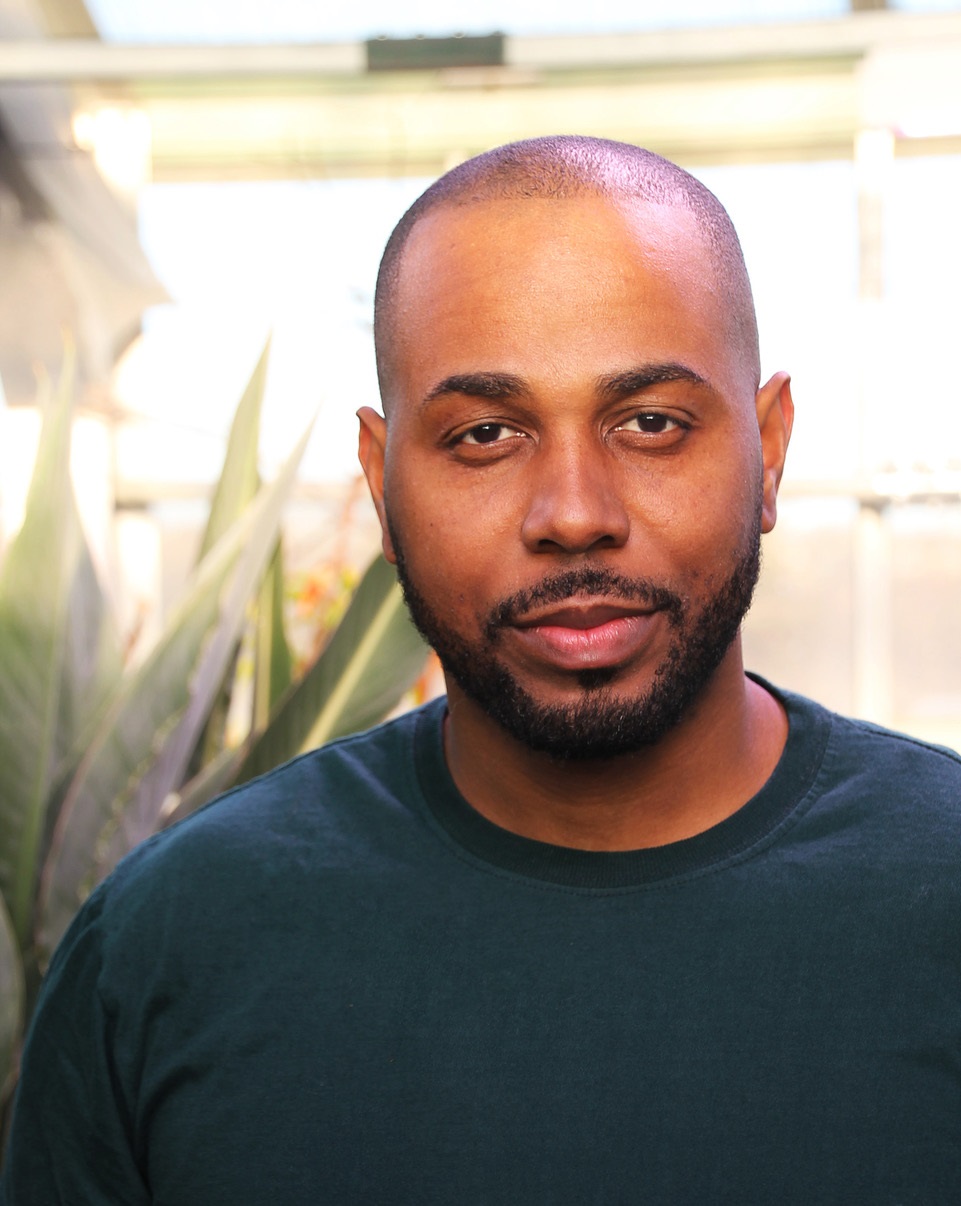 |
|
| photo: Anju Manandhar | |
Cadwell Turnbull is the author of The Lesson and the Convergence Saga. His short fiction has appeared in the Verge, Lightspeed, Nightmare, Asimov's Science Fiction and several anthologies. His novel The Lesson was the winner of the 2020 Neukom Institute Literary Award. No Gods, No Monsters was the winner of a Lambda, a finalist for the Shirley Jackson Award and the Manly Wade Wellman Award, and longlisted for the PEN Open Award. We Are the Crisis was a finalist for the Manly Wade Wellman Award and an Ignyte Award. Turnbull grew up on St. Thomas, U.S. Virgin Islands. His latest novel, A Ruin, Great and Free (Blackstone Publishing), is the third and final book in the Convergence Saga, set in a world where creatures from myth and legend have come out from the shadows.
Handsell readers your book in 25 words or less:
My books are interpersonal drama meets sociopolitical exploration meets cosmic weirdness. My fantasy trilogy is a love child of Buffy and The Wire.
On your nightstand now:
I'm keeping my nightstand clear these days. But I have been rereading Children of God by Mary Doria Russell. Just started Atmosphere by Taylor Jenkins Reid. And just finished Where the Axe Is Buried by Ray Nayler.
Favorite book when you were a child:
Favorite book was 1984 by George Orwell. I know. Not really optimistic reading. But I'd still put that book pretty high on my list. It was a huge influence on me as a writer.
Your top five authors:
Ursula K. Le Guin, Octavia Butler, N.K. Jemisin, Emily St. John Mandel, and Ted Chiang. Ray Nayler has become a new favorite and isn't on this list only because of who is already there.
Book you've faked reading:
Oh boy. I've been "slowly reading" Infinite Jest by David Foster Wallace for years. More not reading at this point if I'm being honest. And I've been 200 pages from the ending of 1Q84 by Haruki Murakami for several years now. Still convinced I will someday finish it.
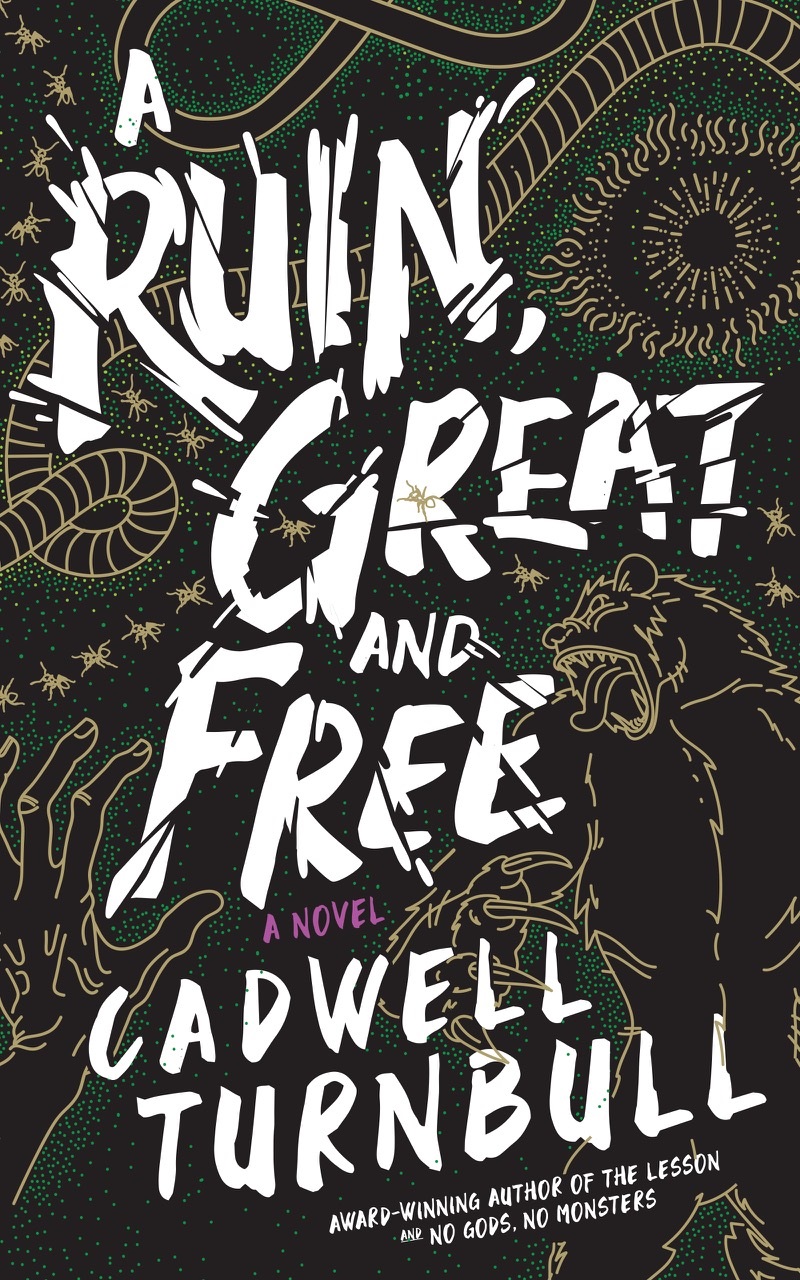 Book you're an evangelist for:
Book you're an evangelist for:
Right now? It has to be Children of God. Utterly brilliant and deeply challenging book. Challenging in a good way. I've never seen faith (and fate) tackled in such a nuanced, unflinching, spiritually agnostic way before. A beautiful sequel to Russell's The Sparrow, just as worthy of everyone's time.
Book you've bought for the cover:
I had to run to the shelf: Our Share of Night by Mariana Enríquez. It is even more spectacular than the cover suggests.
Book you hid from your parents:
I didn't really have to hide. But I did "borrow" a copy of The Coldest Winter Ever by Sister Souljah from my big sister when she wasn't looking. Eye-opening to say the least. And taught me that fiction could contain a range of experiences. Urban fiction was the first time I read about people that I recognized--not exactly my life experience, but close enough that I could see myself in the characters. Yes, the book is spicy, but that also taught me something. Fiction can be raw, unflinching; it doesn't have to look away.
Book that changed your life:
The Dispossessed by Ursula K. Le Guin. If 1984 was my first awakening, this was my second. Still my favorite book.
Favorite line from a book:
"He was like the knife that wounds, and like the wound." --from "Paradises Lost" (in The Found and the Lost) by Ursula K. Le Guin.
Five books you'll never part with:
Well, more Le Guin, obviously: The Found and the Lost and The Dispossessed. Station Eleven by Emily St. John Mandel. Too Much Happiness by Alice Munro. The Unbearable Lightness of Being by Milan Kundera, for mostly sentimental reasons at this point. Another literary awakening. I have to cheat and add 1Q84. I can't get rid of it until I finish it, at least.
Book you most want to read again for the first time:
There are far too many. I won't repeat any that I've already listed. My answer: Chain-Gang All-Stars by Nana Kwame Adjei-Brenyah. Just so I can experience the magic trick of that novel's ending with fresh eyes.
A short story worth reading immediately:
"Story of Your Life" by Ted Chiang. A brilliant refashioning of non-fictional techniques towards fictional ends. And a gut-punch of a story. Once you're done, I recommend watching the adaptation, Arrival. They're doing two very different things, but both are excellent.
Book Candy
Book Candy
"These movie and TV adaptations were better than the books, according to audiences," Mental Floss noted.
---
The Public Domain Review featured a copy of Hamonshū, a japanese book of wave and ripple designs (1903).
---
"How to write in cuneiform, the oldest writing system in the world: a short introduction." (via Open Culture)
Guilty by Definition
by Susie Dent
At the heart of Susie Dent's contemporary mystery masterpiece, Guilty by Definition, lies the unfinished story of the Thornhill sisters, two academically gifted women with opposing temperaments and a shared passion for the written word. The eldest, Charlotte, went missing more than a decade ago from her family home in Oxford, England, while working on her PhD. Her case remains unsolved. Charlie, as she was known, was gorgeous and charismatic in an intimidating, sometimes cruel way; her shy younger sibling, Martha, languished in the shadow of her sister's brilliance. The radiating energy of Charlie's "living absence" haunts the pages of Dent's marvelous novel as her fate comes clearly into focus.
The story opens one spring with Martha, now in her mid-30s, returning to Oxford after a decade abroad in Berlin. She fled her hometown after Charlie disappeared--it was too painful to remain--but now she is back as the newly appointed senior editor of the Clarendon English Dictionary, with a talented team of lexicographers under her supervision. Soon after she joins the CED, anonymous letters containing perplexing riddles and Shakespearean clues begin arriving at the dictionary office. While the missing Charlie is the apparent focus of the letters, they also allude to an ancient manuscript that, if it exists, will spark a global literary sensation. It's an intriguing and irresistible premise set against the enchanting backdrop of Oxford's "obligingly dreamy" architecture.
Dent (Word Perfect; Dent's Modern Tribes), a renowned English lexicographer and etymologist, is the popular, longstanding resident word expert on the British television show Countdown and has authored a number of books on the English language. Her first novel captures the seductive power of the written word, bound up as it is with history, cultural meaning and literary references, its ability to encapsulate a time and place long gone. Intimately familiar with Oxford, she is a guide through its "twisting cobbled alleyways" and the fascinating inner workings of the CED, modeled on Dent's prior employer the Oxford University Press. This is where Martha and her team record new words that come into existence and document the evolution of existing words.
Readers with a fondness for word games will have a splendid time trying to decipher the cleverly confounding clues and the letter writer's identity in the excellent company of Martha and her three colleagues, who share a passion for etymological challenges and obscure literary references. There's Simon, senior to Martha in tenure, who was passed over for the senior editor position and wears bright patterned shirts to the office. Alex is a brilliant woman, older than Martha, with an exquisite sense of style and a secretive life outside the office. The youngest lexicographer is the quick-witted Safi, known for her bright outfits, her fierce intellect, and her impressive mastery of the finicky printer. All are pulled together by Martha, whose gentle pre-Raphaelite beauty contrasts with her absent-minded fashion sense and the Doc Martens she pairs with her dresses. Her team is accustomed to receiving the odd "Shakespearean crank letter" now and again, but the new anonymous correspondence portends something more serious and casts an unsettling pall over the office, especially when the lexicographers start receiving cryptic postcards at their home addresses.
As Martha reacquaints herself with favorite Oxford haunts, she must also confront relationships that she has neglected, especially with her widower father, who resents Martha as though she is to blame for Charlie's disappearance. Echoes from the past are everywhere, urging her to find Charlie or discover her fate, reminding Martha of the role she fears she played in her sister's disappearance.
Fueled by Safi's crackling enthusiasm, Martha and her colleagues begin in earnest to decipher the anonymous letters as they gather in the office and in a 14th-century pub tucked into an ancient courtyard. Their investigation takes them to the Cheshire Cat Antiquarian Bookshop in the Cotswolds and a manor house in Oxfordshire Charlie had visited. Martha enlists the help of Detective Oliver Caldwell, convincing him to reopen Charlie's case, and she asks the pompous Shakespearean scholar Jonathan Overton--handsome, beautifully dressed, and disagreeable--for help deciphering the letters' mind-boggling clues. Dent's skillfully executed plot holds multiple layers of tension, including the relationship dynamics of a tight-knit yet secretive literary community. Not everyone is thrilled that the case is reopened, and it soon becomes frighteningly clear why.
Part of Guilty by Definition's charm lies in discovering, alongside Martha, Simon, Alex, and Safi, intriguing lost words. Each chapter is headed by a forgotten word from past centuries: the noun "velleity," for example, from the 17th century, means "the act of wishing or desiring without any accompanying effort"; the marvelous 16th-century word "addubitation" means "a suggestion of doubt."
Swirling with themes of sibling rivalry, greed and ambition, the novel's action accelerates as clues contained in the letters give way to newly uncovered truths and lead to a heart-pounding, spectacular finale. The mysteries at the center of the drama--Charlie's whereabouts and what she was hiding, Martha's guilt, the identity of the letter writer--find resolution in a series of unexpected yet ingenious plot twists that will take readers utterly by surprise. --Shahina Piyarali
Learning New Words Every Day
An Interview With Susie Dent
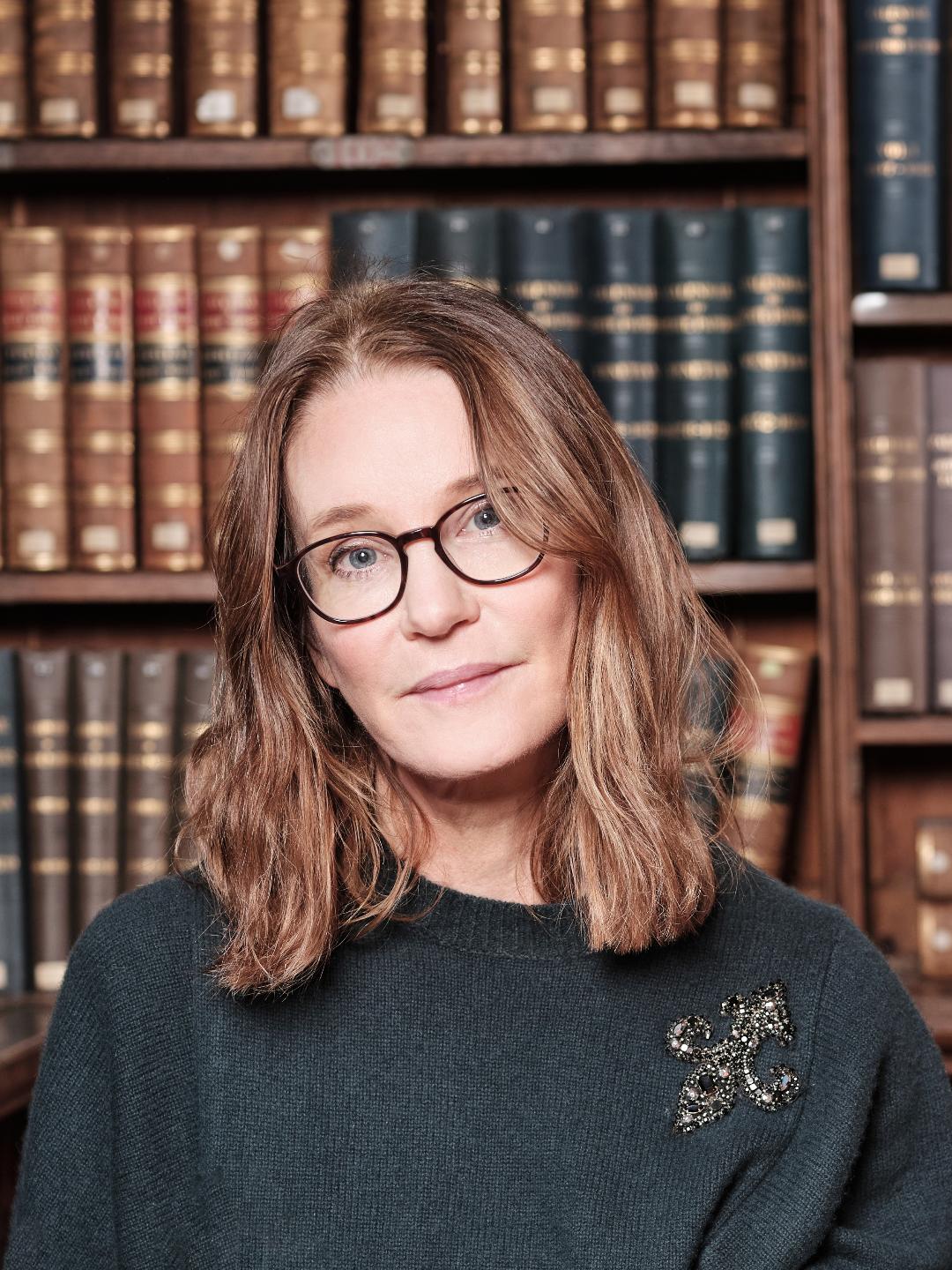 |
|
| Susie Dent (photo: Michael Leckie) |
|
Susie Dent, lexicographer and etymologist extraordinaire, lives in Oxford, England, where her first novel, Guilty by Definition (Sourcebooks Landmark), is set. She is a beloved English television personality who has appeared on the British game show Countdown since 1992. The author of several nonfiction titles, including Word Perfect, How to Talk Like a Local, and What Made the Crocodile Cry: 101 Questions About the English Language, Dent was appointed a Member of the Order of the British Empire (MBE) in 2024 for her contributions to language and literature. Guilty by Definition is set in a tight-knit literary community still haunted by the disappearance of a brilliant PhD student a decade earlier. The unraveling of that mystery is coupled with the search for a lost treasure trove of writing that, if it exists, will transform the literary landscape.
What are some of your earliest memories of interacting with words?
I have been intrigued by words for as long as I can remember. As I child, even before I was able to read, I was fascinated by the letters on signposts and shampoo bottles--by their shape and promise. In a way, it's always felt as though words found me rather than the other way round.
Are there aspects of yourself in Martha, and are there parallels between her life and yours?
Martha is very similar to me in lots of ways. She is a daydreamer and lives in her head; she marvels at the secret lives of words, and sees the beauty of German, having lived in Berlin for a while, as I did. But I did also try to draw some distinctions between her character and mine. She is not a worrier, as I am, and she can be unintentionally blunt, whereas I tend to apologize too much! I do tend to think of her as a soulmate, however, and often find myself wondering what she might make of conversations or encounters that I experience.
In our age of digital storage, there's something solid and reassuring about the slips of paper bundled with string at the dictionary office. Are slips still used to record the biography of words?
The "slips" room at Oxford University Press, home of the Oxford English Dictionary and the inspiration for the dictionary in my novel, is a place of wonder. As a room, it's pretty ordinary, but the magic begins when you take down a stack of slips--6×4 pieces of paper stored in weathered oak cases--and begin to read the jottings of lexicographers of the past and the evidence they collected for how words are used. The first editor of the OED, James Murray, built a shed in his garden in Oxford to house the thousands of slips from his team of editors and readers, which he called his Scriptorium. Today's lexicographers still consult the evidence of language usage from previous editors when revising existing entries, although much of today's dictionary-writing is, of course, fully digitized. We are able to consult vast databases containing billions of words of current language, allowing us to document change in real time.
Safi, with her youthful energy, is the youngest of the lexicographers we meet at the Clarendon English Dictionary. Are millennials and Gen Z entering the profession?
Very much so. The passion for documenting language that I wanted to illustrate through Safi is as strong as ever, and lexicography continues to be a hugely exciting profession. It is vital that it attracts younger generations who are not only immersed in current language evolution but who are also best placed to monitor words that are bubbling under--for example from current slang--and which might burst through the surface at any moment.
Do you still encounter unfamiliar words after all this time immersed in the English language and its history?
I learn something new every day! I can't imagine I will ever tire of reading the dictionary and delighting in the history of even the most everyday words. Today I've been looking at "kennings," word couplings that date back centuries and that describe everyday things. A ship, for example, was once described as a "wave-horse," the mind was a "thought-chamber," and a "sea-candle" was the sun as it dips below the horizon over the sea. They're so beautiful.
With Guilty by Definition poised for an outstanding reception, will you continue writing fiction?
This was such an exciting new direction for me after many years of writing nonfiction, but it was also a scary one. The prospect of creating a fictional world populated by complex characters was quite intimidating, quite apart from the plotting!--but I am so glad I took the plunge. I am learning all the time in this new medium, and very much want to discover where Martha and her team will go next. There will be a second novel next year and, if readers enjoy it as I hope, more after that.
Can you share any advice or organizational tips for fledging fiction authors?
Two pieces of advice from writer friends turned out to be really valuable. The first was to write about what you know, which certainly made things less daunting. There is a lot of linguistic exploration in Guilty by Definition, and its story also gave me a chance to share some forgotten words from the past that I adore. The second was to write the first draft with as much spontaneity and unselfconsciousness as possible, as so much of the work is in the edit. The plot, characters, and prose can all be remoulded later on. That made the initial blank piece of paper far less terrifying.
What is your version of an ideal day?
No alarm clock, excellent coffee, a cold sunny morning (so that I can use my favourite word, "apricity," which in the 17th century meant the warmth of the sun on a chilly day), then a few hours of reading followed by a long walk in the Cotswolds. The day would be topped off with a delicious supper with family and friends, chatting into the night long after the eating is done--what the Spanish know as sobremesa: relaxing at the table after a meal. That would be my perfect day! --Shahina Piyarali
Rediscover
Rediscover: Jane Goodall
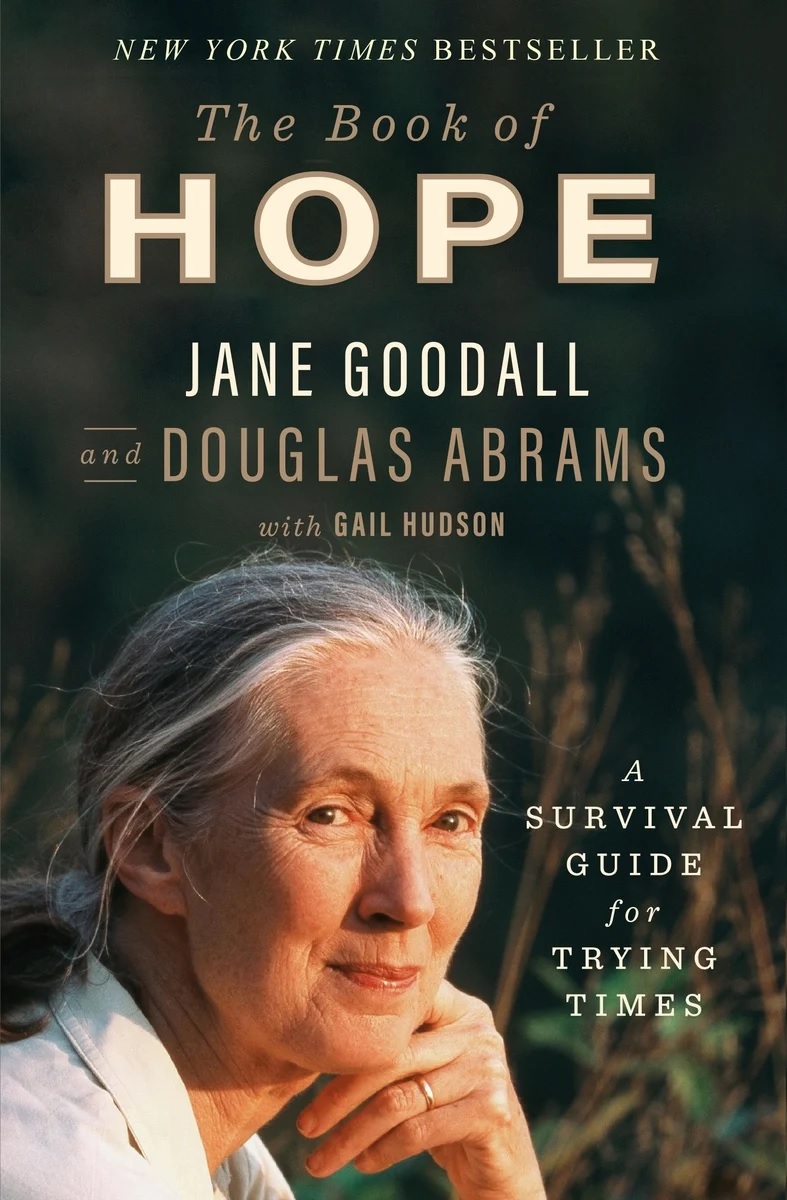 Jane Goodall, "one of the world's most revered conservationists, who earned scientific stature and global celebrity by chronicling the distinctive behavior of wild chimpanzees in East Africa--primates that made and used tools, ate meat, held rain dances, and engaged in organized warfare--died October 1 at age 91, the New York Times reported. Goodall wrote 32 books, 15 of them for children.
Jane Goodall, "one of the world's most revered conservationists, who earned scientific stature and global celebrity by chronicling the distinctive behavior of wild chimpanzees in East Africa--primates that made and used tools, ate meat, held rain dances, and engaged in organized warfare--died October 1 at age 91, the New York Times reported. Goodall wrote 32 books, 15 of them for children.
Her death has sparked tributes worldwide for her lifelong dedication to her work in the field, but the Times also noted that "long before focus groups, message discipline and communications plans became crucial tools in advancing high-profile careers and alerting the world to significant discoveries in and outside of science, Dr. Goodall understood the benefits of being the principal narrator and star of her own story of discovery."
A significant part of that communication was through her work as a writer. She was 29 in 1963 when National Geographic magazine published her 7,500-word, 37-page account of the lives of primates she had observed in the Gombe Stream Chimpanzee Reserve in what is now Tanzania.
"In articles and books, her lucid prose carried vivid descriptions, some lighthearted, of the numerous perils she encountered in the African rainforest," the Times wrote. Her writing gained more attention in three long articles in National Geographic in the 1960s and '70s and in three well-received books: My Friends, the Wild Chimpanzees (1967), In the Shadow of Man (1971), and Through a Window (1990).
Goodall's mother was an author and novelist who wrote under the name Vanne Morris-Goodall and accompanied her daughter to the Gombe reserve at the start of Jane Goodall's study in 1960. She also became a leading character in her daughter's writing, the Times noted.
Goodall's books for children include Chimpanzees I Love: Saving Their World and Ours (2001) and Rickie and Henri: A True Story (2004, with Alan Marks). Her adult books include Beyond Innocence: An Autobiography in Letters, the Later Years (2001, edited by Dale Peterson), The Ten Trusts: What We Must Do to Care for the Animals We Love (2002, with Marc Bekoff), Harvest for Hope: A Guide to Mindful Eating (2005), Hope for Animals and Their World: How Endangered Species Are Being Rescued from the Brink (2009), and Seeds of Hope: Wisdom and Wonder from the World of Plants (2013, with Gail Hudson).
In her last work, The Book of Hope: A Survival Guide for Trying Times (2021, with Douglas Abrams & Gail Hudson), she wrote of her optimism about the future of humankind.
For a remembrance in the Free Press, Evan Gardner spoke with Richard W. Wrangham, the Ruth Moore Professor of Biological Anthropology, Emeritus, at Harvard, who spent the formative years of his career researching chimpanzees in Tanzania and working as a protégé to Goodall.
Asked about her legacy, Wrangham said: "As a scientist she was, of course, the first person to document the lives of chimpanzees in the wild, and she did so absolutely beautifully. Her 1986 book, The Chimpanzees of Gombe: Patterns of Behavior was a masterpiece of description of the complicated species with many different angles, and it was a very sophisticated description that people still cite, probably more than anything, despite the fact that there are far more people now studying chimps in many different places than during her time. So she set the standard, and she built the foundation for the study of chimpanzees in a really terrific way. That's one aspect of her legacy."
When asked what the one thing is that we should all remember her for, he replied: "I think that the phrase that she would use--she was talking both with respect to chimps and humans--is that every individual matters."


